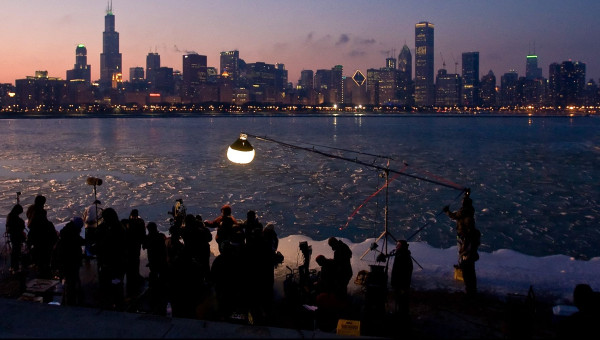Posted 21 months ago in Loop economy, affordable housing
4 MIN READ – Four adaptive re-use projects within the Loop’s historic financial district will be formally proposed for development assistance this spring as part of the City of Chicago’s ongoing commitment to mixed-use, mixed-income vitality downtown, Mayor Brandon Johnson announced on April 3, 2024.
Collectively valued at more than $528 million in development costs, the four projects would create more than 1,000 new apartments within underutilized office buildings, including a 1913 high-rise located at 79 W. Monroe St. that was recently added to shortlisted proposals being reviewed for potential City funding.
Tax Increment Financing (TIF) assistance totaling more than $150 million would ensure at least 319 of the planned units would be rented at affordable rates.

"These transformative projects within the Loop signify more than a revitalization of space; they embody our city's dedication to inclusivity and growth," said Mayor Brandon Johnson. "By creating more than 1,000 homes, including more than 300 affordable units, we are investing in the futures of countless Chicago families, and keeping our Loop community a welcoming hub for all."
Initiated by a 2022 invitation for proposals (IFP) by the Department of Planning and Development (DPD) and Department of Housing (DOH), the selected projects will advance for review by the Community Development Commission and the Landmarks Commission starting this spring. City Council approval will also be required for the TIF support and potentially other aspects of each project.
The projects include:
111 W. Monroe St.
Planned for 14 floors within a pair of adjacent buildings, including a 1911 high-rise, the $202.8 million Prime Group Inc. and Capri Investor LLC project would create 345 units, 105 of which would be affordable through $40 million in TIF assistance. Other proposed funding sources include 4% low-income housing tax credits, tax exempt bonds, a federal loan, and historic tax credits. A potential City Landmark designation would also make the project eligible for a property tax incentive that would also support a planned, 228-key hotel within the complex.
208 S. LaSalle St.
Planned for four floors within a 100-year-old City Landmark, the $122.7 million Prime Group Inc. project would create 226 units, of which 68 would be affordable through $26.2 million in TIF assistance. Other proposed funding sources include 4% low-income housing tax credits, tax exempt bonds and a federal loan. City review and underwriting resulted in the project’s TIF request being reduced by $6.8 million from the original submission.
30 N. LaSalle St.
Planned for 14 floors within a 1975 a high-rise, the $130.2 million Golub & Co. LLC and American General Life Insurance project would create 349 units, 105 of which would be affordable through $57 million in TIF assistance. City review and underwriting resulted in the project’s TIF request being reduced by $5 million from the original submission.
79 W. Monroe St.
Planned for the 1913 Bell Federal building by Campari Group, the $64.2 million project would repurpose eight floors as 117 residences, 41 of which would be affordable through $28 million in TIF assistance. Key architectural features would be retained and restored through a formal City of Chicago landmark designation, including the iconic “Weather Bell” sign. Other anticipated funding sources include federal historic tax credits.
Two other short-listed adaptive reuse proposals for 135 S. LaSalle St. (Riverside Investment & Development and AmTrust RE) and 105 W. Adams St. (Celadon Partners and Blackwood Group) continue to be evaluated by DPD and DOH for City support.
The affordable units within each project would be reserved for tenants earning an average of 60% of the Area Median Income (AMI), or approximately $53,000 for a two-person household.
Totaling more than 1.3 million square feet of space, the projects would reduce a record 5 million square feet of vacant commercial space along the LaSalle corridor in the Loop by more than 25%, said Department of Planning and Development Commissioner Ciere Boatright.
“One thousand new, mixed-income homes will add vitality and diversity for more neighborhood-oriented investment like stores and restaurants, as well as traditional commercial projects that are long synonymous with the central business district,” Commissioner Boatright said.
“Steps like these help us transform Chicago into the City that we want it to be,” Department of Housing Commissioner Lissette Castañeda said. “With over 300 new affordable housing units in the heart of Chicago’s downtown, the area becomes a little more accessible to folks that call this city home.”
Pending formal review and approval procedures, project construction could start in early 2025.



